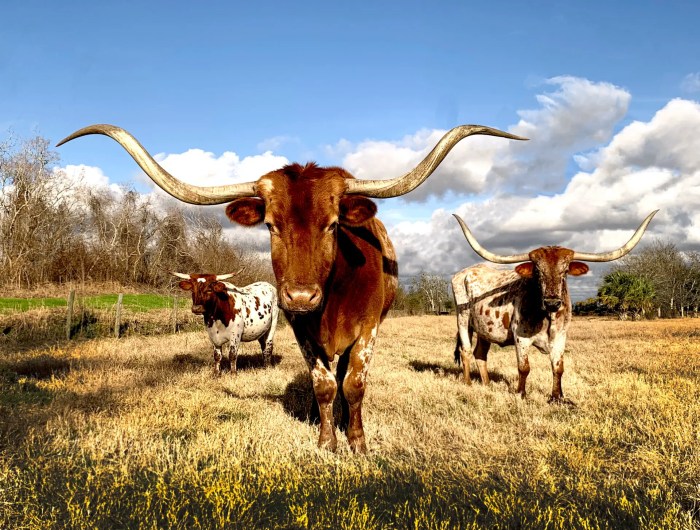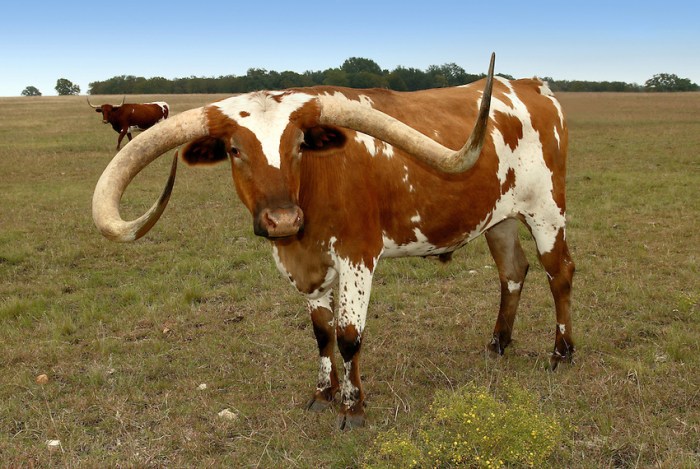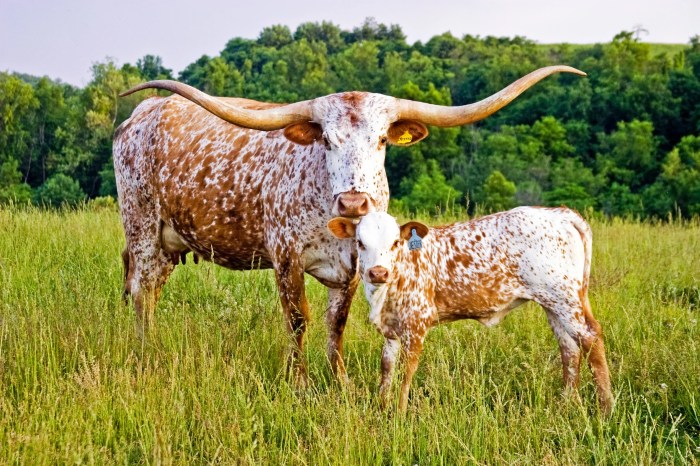Disadvantages of texas longhorn cattle – The Texas Longhorn, renowned for its striking appearance and historical significance, presents certain drawbacks that warrant careful consideration. This comprehensive analysis delves into the challenges associated with handling, size, meat quality, reproduction, health, nutrition, marketing, and environmental impact, providing valuable insights for prospective owners and industry stakeholders.
Disadvantages of Texas Longhorn Cattle

While Texas Longhorn cattle possess certain unique traits, they also have several disadvantages that should be considered before selecting them for a specific production system.
Temperament and Handling
Texas Longhorn cattle are known for their independent nature and strong herding instincts. This can make them challenging to handle and train compared to other breeds. They may be more likely to exhibit defensive behaviors, such as charging or pawing, when approached or restrained.
Their herding instincts can lead to difficulties when separating individuals or moving the herd.
Size and Growth Rate
Texas Longhorn cattle are typically larger in size than other beef breeds. While their large frame can be an advantage for certain purposes, it can also present challenges. Their slow growth rate means that they take longer to reach market weight, which can impact production efficiency.
Additionally, their size can make them more difficult to house, transport, and handle.
Meat Quality and Yield, Disadvantages of texas longhorn cattle
Texas Longhorn beef is generally lean and flavorful, but it may not have the same level of marbling and tenderness as other beef breeds. Their lower meat yield compared to other breeds can also be a disadvantage for commercial production.
Reproduction and Calving
Texas Longhorn cattle have moderate reproductive performance compared to other breeds. While they have good fertility rates, calving ease can be a challenge due to their large calf size. Dystocia (difficult birth) and calf mortality rates may be higher in Texas Longhorn cattle.
Health and Disease Resistance
Texas Longhorn cattle are generally hardy and disease-resistant, but they can be susceptible to certain health issues, including hoof problems, respiratory infections, and parasites. Their large size and slow growth rate can make them more vulnerable to injuries and metabolic disorders.
Feed and Nutrition
Texas Longhorn cattle have unique nutritional requirements due to their large size and slow metabolism. They require high-quality forage and may need supplementation to meet their nutritional needs. Their digestive system and metabolism differ from other breeds, which can impact feed efficiency.
Marketing and Demand
The market demand for Texas Longhorn cattle and their products is relatively niche. While there is a growing interest in their unique traits, the overall demand may be limited compared to other beef breeds. This can affect the value and marketability of Texas Longhorn cattle.
Environmental Impact
Texas Longhorn cattle production can have an environmental impact due to their grazing habits and methane emissions. Their large size and slow growth rate can result in higher feed consumption and greenhouse gas emissions. However, their ability to graze on marginal lands can also contribute to land conservation and biodiversity.
Key Questions Answered: Disadvantages Of Texas Longhorn Cattle
Q: Are Texas Longhorn cattle difficult to handle?
A: Yes, their independent nature and strong herding instincts can make them challenging to work with, requiring experienced handlers.
Q: How does the slow growth rate of Texas Longhorn cattle affect production efficiency?
A: It can result in lower meat yield and increased production costs compared to faster-growing breeds.
Q: What are the common health issues faced by Texas Longhorn cattle?
A: They are prone to respiratory problems, foot rot, and parasites due to their long horns and exposure to outdoor environments.

